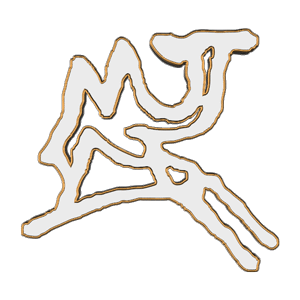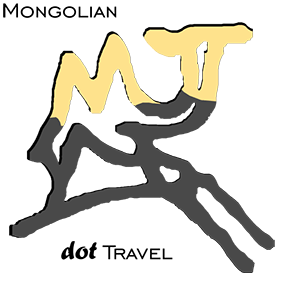Is this country safe
Politically the country is very stable. An elected President and Parliament is at the head of country’s management. Administratively, if you meet your visa requirements, no other hassle will be experienced. Policemen are helpful to foreigners and no street violence exists. No natural disasters such as earthquakes and floods were registered recently. As general rule in any other countries avoid walking during night and drunken people. The only problem you might encounter is a drunken Mongolian who at night start relating you his life stories in Mongolian language.
The country and its people.
Mongolia is a huge country with a population density close to 1 person a square kilometre. Mongolian landscape diversity is impressive. It goes from the mirror flat Gobi Desert to the high with snow-capped Altai mountain peaks, passing by with forest covered rolling hills of Central Mongolia. The nature is unique, unexplored and has a rich biodiversity. People are as diverse. Khalkh people in majority. They coexist with Buriat, Kazakh and many other minorities. They all live in respect of their traditional culture. All of Mongolians have an incomparable hospitality. Mongolia will make you delighted.
What is the quick and easy access to Mongolia?
Transport to and from Mongolia is usually by air or train. Flights are run all year around by MIAT (Mongolian Airlines) to and from Berlin, Frankfurt, Moscow, Beijing, Tokyo, Seoul, Hong Kong. Aeroflot, Air China, Korean Air, Turkish Airlines have regular weekly flights in and out of the country. You can also travel to and from Mongolia by train. The Trans-Mongolian Express Train takes few days to travel from Moscow and Beijing stopping in Mongolia.
You can enter Mongolia by overland as well at following border points:
West Mongolia: Tsagaan Nuur in Mongolia side, Tashanta in Russia side.
West Mongolia: Bulgan in Mongolia side, and Takashiken in Chine side.
North Mongolia: Altanbulag in Mongolia side and Naushki in Russia side.
East Mongolia: Zamiin Uud in Mongolia side and Erlian in Chine side.
The weather
Being far from any ocean influence, Mongolia has a very continental climate. The summers are pleasantly warm; winters are freezing cold. The touristy months are from May to October. Winter tourism is now slowly taking off with numerous winter festivals glorifying mighty Mongolian winter in its all splendid. Mongolia is also known as the land of blue sky. With over 280 sunny days a year, very little rain is to be expected during your stay in Mongolia. Khovsgol region in the month of August however a little rainy.
The food
Traditionally Mongolians eat meat, dairy products and vegetables such as onions, garlic, potatoes, carrots, turnips and cabbages. We drink salted milk tea, fermented mare milk and alcohol made of fermented, distilled cow milk.
However, eating habit has been a lot changed lately. Nowadays our food culture is becoming more diverse and you can easily find international restaurants with great selection of menu. Our supermarkets in bigger cities offer variety of fresh vegetables and fruits. We generally prepare mixture of western, eastern and Mongolian cuisine. On our tour our cooks prepare well balanced healthy meals respecting your eating habits. Our cooks accommodate all dietary restrictions and allergies.
Tours: How about accommodations?
In Ulaanbaatar has many luxury, western style hotels. Many of them are centrally located, in walking distances from shops, restaurants, cafes and sightseeing places.
In countryside you can stay in Gers of Ger Camps. Gers are the traditional felt tents of nomadic herders. Each Ger is furnished with a wood stove and beautifully painted furniture as beds, a table and stools. Gers are mostly based on double and twin occupancy. Each Ger camp has its restaurant, western styled toilet and hot water and showers.
Most visitors find their stay in Gers which provide an authentic taste of Mongolian culture and adventure, their most enjoyable experience in Mongolia.
While away from tourist attraction there will be no other solution than to overnight in western style tents because no other accommodation is available. For this we will carry all camping and kitchen equipment. We pride ourselves on the level of comfort we provide while camping in these remote areas, but camping is not for everyone.
However, nowadays at most even remote sightseeing places we have Ger camps with hot water shower, flushed toilet, restaurant and comfortable beds in cosy Gers.
What are trips like?
Travelling in Mongolia is exciting and you will enjoy spectacular different scenery, observe wild life and experience unique culture and nomadic lifestyle and its people.
If you are coming to trek, or horse and camel trek, you should have a certain level of fitness. You may encounter rough bumpy roads, high altitude and basic accommodation. During these trips, the stream might be your bath while toilet can be a discreet rock or bush!
What standard of service do we provide?
All our tours are fully supported. This means that your luggage is carried either by horses, camels or vehicle: we put up and take down your tents, and food is prepared and cooked for you. All you need to carry is small rucksack and enjoy your trip to fullest.
How many members make up a group and who will look after me during the trip?
In order to ensure the utmost in personal service and quality, we limit our groups to a maximum of 8 to 10 passengers. During the expedition knowledgeable and sympathetic guides will look after you with our local auxiliary staff. While camel and horse trek, local nomads will guide around destined areas. They know the best all hidden corners. For each expedition we provide an English speaking guide who will be with you from your arrival in Mongolia until your departure. German, French, Italian, Spanish, Japanese, Korean speaking guides are also available on request.
Can you arrange private itineraries? How long is a typical tour?
Half of the trips we organize involve tailor-made itineraries for private small groups. An average trip lasts 2-3 weeks. We would be happy to organize a custom made trip for a group of 2 or more people. All you need is drop us a line. We will make you your dream itinerary meeting your time, budget, interests and request.


